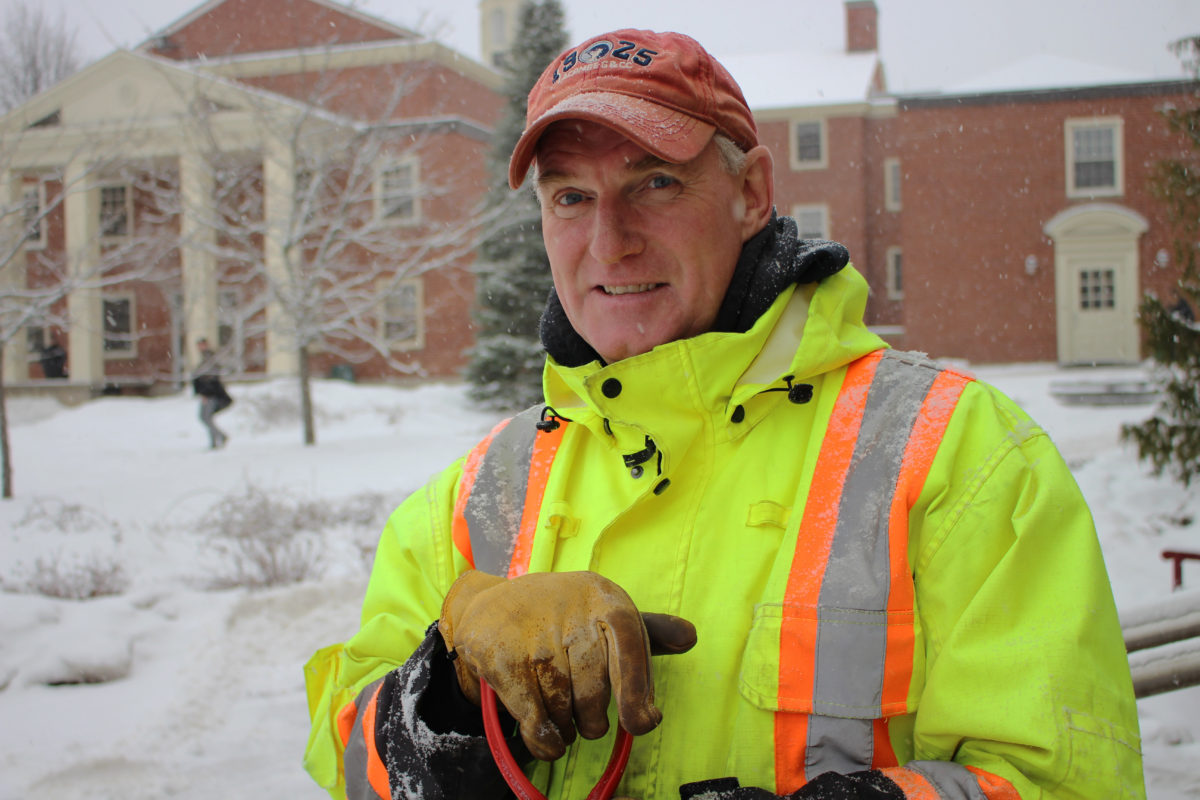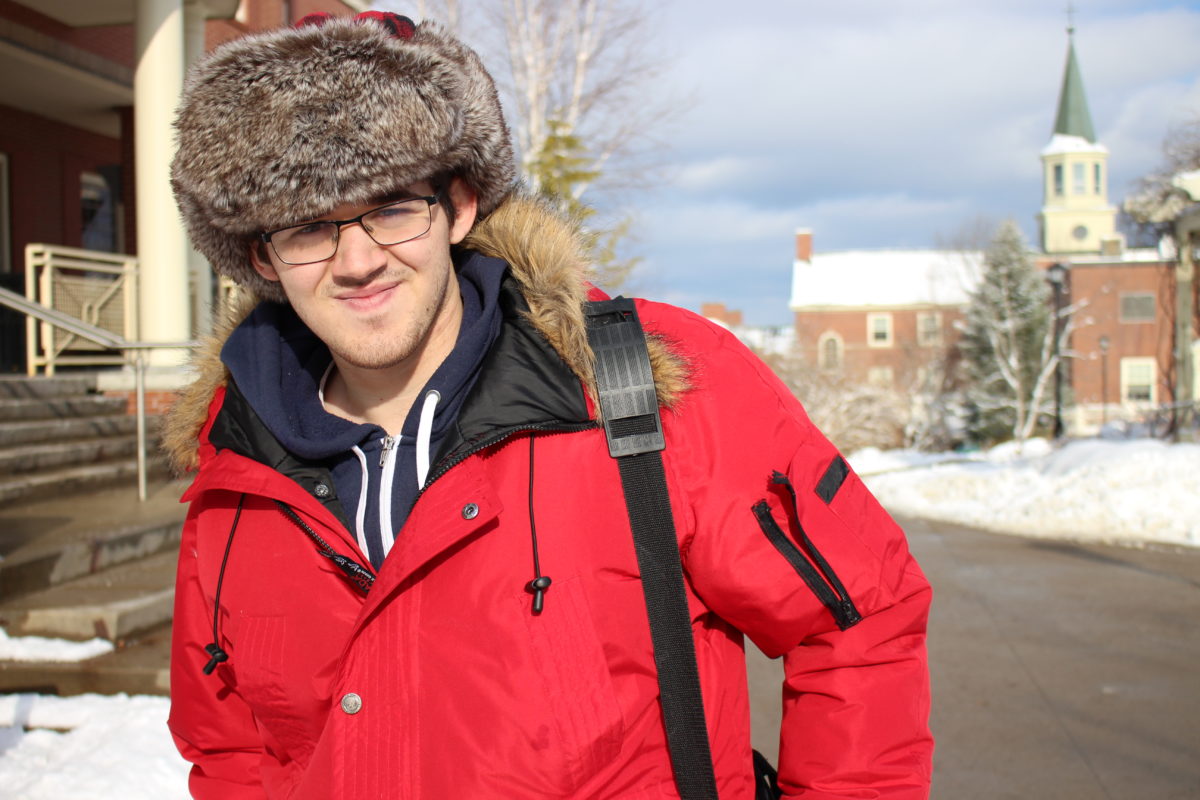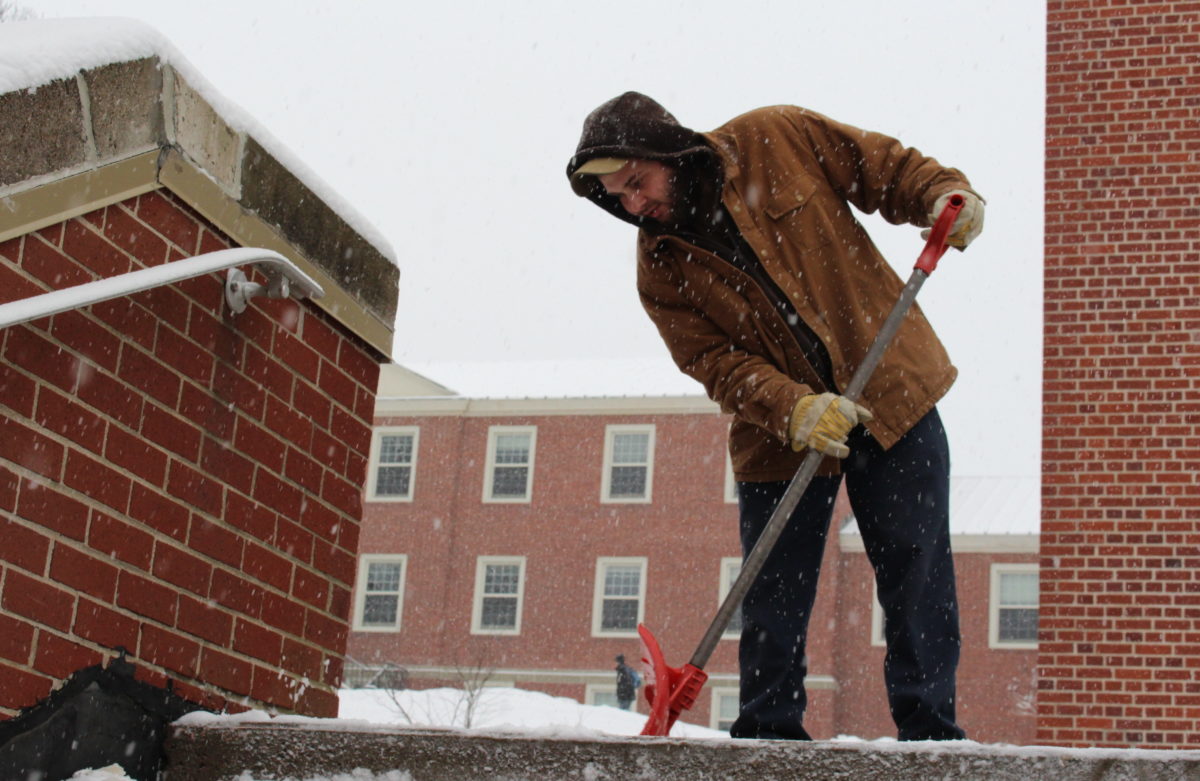Heavy snowfalls in New Brunswick are a given. Snow-blowing, shovelling and sanding are second nature. But it doesn’t always prove easy for students to navigate campus while snow removal workers try to keep up with increasing amounts of snow.
According to Philip Cliff, St. Thomas University’s director of facilities management, only two or three snow removal workers shovel, sand, snow-blow and chip away at the ice on STU’s campus.
University of New Brunswick’s snow removal staff operates tractors and other machinery to clear the roads, parking lots, and any walkways and sidewalks at STU that their equipment can access. Custodians are responsible for clearing entrances of buildings.

Wally MacKinnon is a snow removal worker for STU and has been battling the snow since early December of last year.
“On the days where it’s constant, it’s hard because as soon as you finish from the bottom to the top, you go back and start over again,” he said.
He typically starts at 7:30 a.m. and goes until 4 p.m. He will stay later if the snow continues to fall heavily. After a storm, he’ll start around 5:30 a.m. and work until campus has been cleared.
“I’ve been stopped by some students saying how good of a job we do to help them get back and forth through the snow,” said MacKinnon.
However, Cliff recognizes that clearing parking lots is a challenge for staff.
Despite the effort of workers, extra snow can cause overflow, making students lose out on parking spaces.
Sydney Rickard, a third-year double-major in criminology and psychology has noticed that this has led to students “winging it” when parking on campus.

“When there is a lot of snow on the ground still, people can’t see the lines, so there’s bigger gaps in between cars which then limits the amount of legitimate spaces there is in the parking lot. So people are all parking [haphazardly],” said Rickard.
Don Allen, director for UNB Security and Traffic said once one car parks out of line, others follow suit.
“[This] causes congestion in the lots making it more difficult for people to get around or even get into or out of the parking lots,” said Allen.
He suggests students leave earlier in case they need to search for a parking space, to ensure they still make it to class on time.
Abigail Wright, a third-year gerontology major, follows this advice by leaving early from Rusagonis, which is 20 km outside of Fredericton, where she lives with her aunt during the week.

There has been some criticism by students that cancellation notices are going out on short notice during poor weather.
“I feel like professors need to be a little bit more lenient with some of us off-campus people. I travel 20 minutes outside the city [which isn’t] awful, but I know people that travel [from] an hour away,” said Wright.
Jeffrey Carleton, vice-president of communications said the university pays close attention to the forecast and notifies students through email, the university’s website and social media about whether classes are delayed or the universities will shut down for the day.
Kim Fenwick, vice-president of academic and research and Lily Fraser, vice-president of finance and administration, coordinate with UNB’s faculty and Cliff’s staff to make the decision. If the storm is overnight, how long snow removal will take factors into the outcome. Once the decision is made, a cancellation message must be sent out by 6:45 a.m.
They are also notified by the city if the buses will be pulled off the roads, which can often influence the decision.

If the storm starts when classes are already in session, the same procedure is followed and the message goes out as soon as the decision is made.
“We want to be safe … We know a fair number of people have to travel,” Carleton said. “Not as many people live in residence as before. [That is an] important factor when we make the decision.”
However, it’s not just drivers that face problems when travelling to campus.
Kastriot Axhami, a third-year student walks about 25 minutes to campus. However, when it storms he catches a ride with a friend.
He said when there is ice on city sidewalks, it can be difficult to use them. It is also near impossible for those in a wheelchair, to travel safely because of poor conditions.
“On campus [the snow removal staff] do try … It could be better … [but] it’s not too bad, all things considered,” said Axhami.
MacKinnon said when snow is expected, the workers do their best to clear the way for students.
“What we do really here is all about the safety of the students, it’s all about the students, to make sure they’re able to get anywhere they need to go.”

